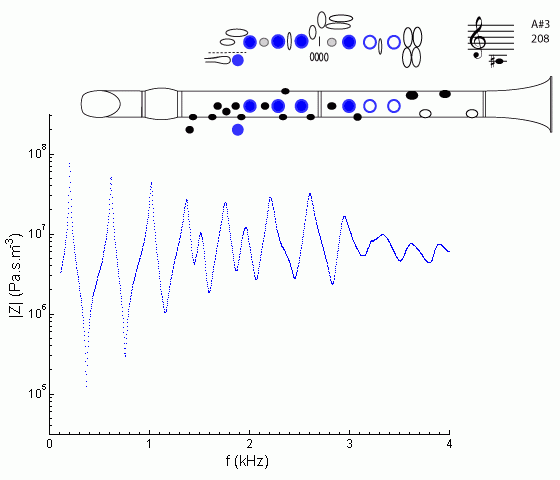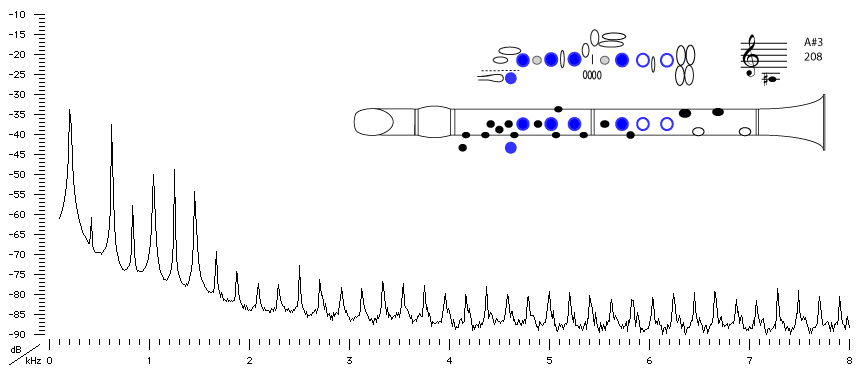| Acoustics of the clarinet |
Bb clarinet |
A#3 |

|
Fingering Acoustic schematic Non-specialist introduction
to acoustic impedance Notes are the written pitch. |
We are now in the middle of the chalumeau register. Notice that the low even harmonics in the sound spectrum have been gradually getting more noticeable as we progressed up the scale: the 2nd and 4th are weak, but the 6th is almost as strong as its neighbours. This is because, above the cut-off frequency, the effective length of the instrument is rather longer than it is below that frequency. Consequently, only the first few impedance peaks are in harmonic ratios.
For general comments about the chalumeau register, see E3.

Sound spectrum
of a Bb clarinet
played using fingering for A#3.
For more explanation, see
Introduction to clarinet acoustics
|
Contact:
Joe Wolfe
/ J.Wolfe@unsw.edu.au |